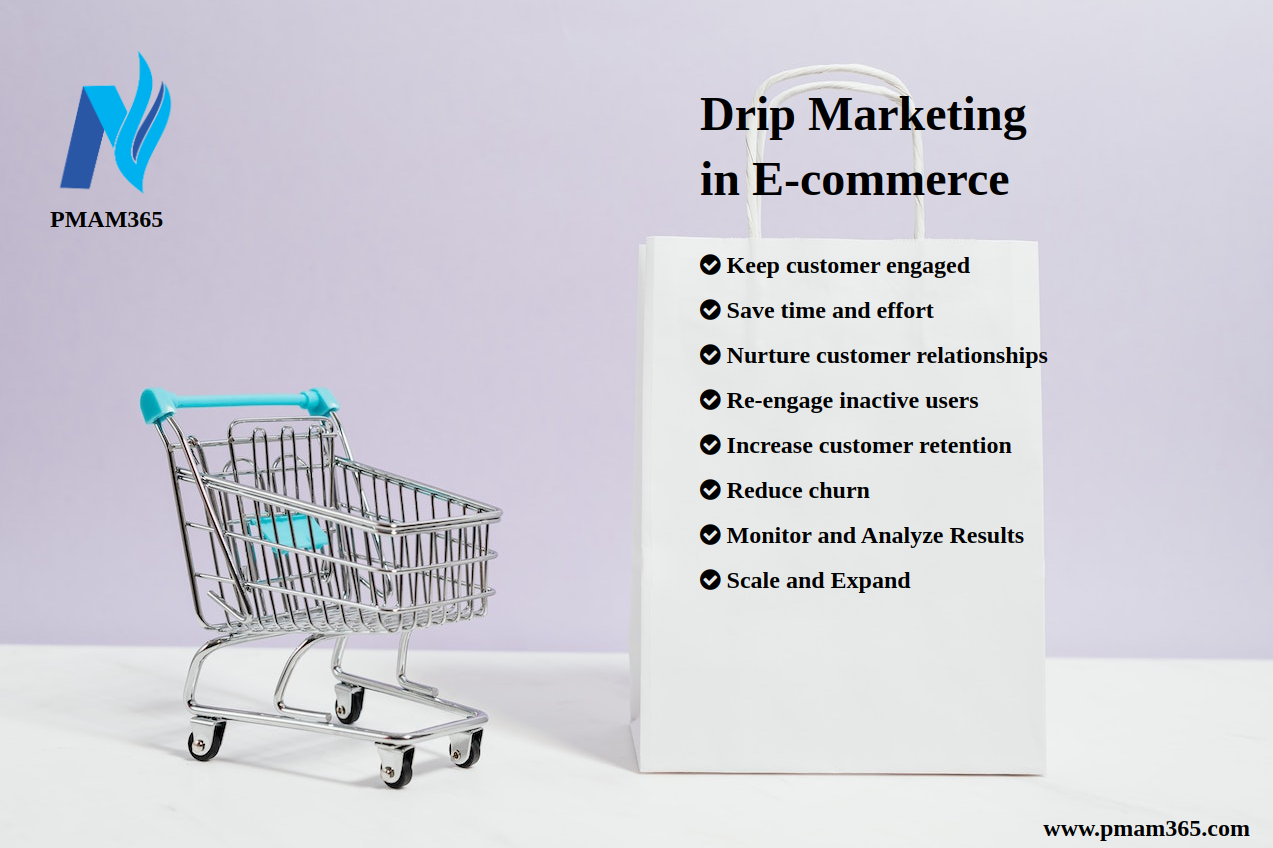

Implementing drip marketing in e-commerce can be a powerful way to nurture leads, retain customers, and increase sales over time. Drip marketing is a strategy that involves sending a series of automated, targeted emails to users over a specific timeline.
Benefits of email drip campaigns:
Here's a step-by-step guide on how to implement drip marketing in e-commerce:
Set Clear Goals:
Define your objectives for the drip campaign. Are you trying to convert leads, re-engage inactive customers, or upsell existing customers? Understanding your goals is crucial for designing your campaign.
Segment Your Audience:
Divide your email list into segments based on factors like demographics, purchase history, browsing behavior, and engagement level. Segmentation enables you to create more personalized and relevant email content.
Choose an Email Marketing Platform:
Select a reliable email marketing platform or CRM (Customer Relationship Management) software that supports drip marketing.
Create a Content Plan:
Plan the content and timing of your drip emails. Consider creating a content calendar that outlines the emails you'll send and when you'll send them. Typical drip campaigns might include a series of welcome emails, onboarding sequences, product recommendations, or cart abandonment reminders.
Craft Compelling Email Copy:
Write engaging and relevant email copy for each message in your drip campaign. Ensure that the content is tailored to the segment it's targeting and includes a clear call to action (CTA).
Design Eye-Catching Templates:
Design visually appealing email templates that align with your brand's style and messaging. Templates should be mobile-responsive for users on various devices.
Automate the Drip Sequence:
Use your email marketing platform to set up the drip sequence. Create triggers based on user behavior or a specific schedule. For instance, send a welcome email immediately after someone subscribes and follow up with additional emails over the coming days or weeks.
Test and Optimize:
Continuously A/B test different elements of your emails, such as subject lines, copy, images, and CTAs. Use data and analytics to optimize your campaign's performance.
Personalization:
Personalize your emails as much as possible. Use the recipient's name, recommend products based on their previous purchases, and tailor content to their interests.
Compliance with Regulations:
Ensure that your drip marketing emails comply with email marketing regulations, such as CAN-SPAM Act or GDPR, depending on your target audience's location.
Monitor and Analyze Results:
Regularly monitor the performance of your drip campaign. Track metrics such as open rates, click-through rates, conversion rates, and revenue generated. Use these insights to make adjustments and improvements.
Scale and Expand:
As you see positive results, consider expanding your drip marketing efforts by creating new campaigns for different segments or purposes, such as customer re-engagement, upselling, or product recommendations.
Customer Feedback:
Pay attention to customer feedback and adjust your drip campaign based on their preferences and needs.
Remember that effective drip marketing isn't just about sending automated emails. It's about delivering valuable and relevant content to your audience at the right time. This approach can help you build stronger customer relationships and increase sales in your e-commerce business.
Leadership, Finance, Operations, Growth, Product, Service, Sales, Marketing